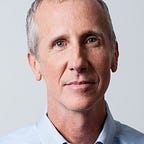SPEAKING TRUTH
Acceptable Deaths and the American Way
Societies make choices about what constitutes “acceptable” deaths. In the U.S., we’re about to make that choice around COVID–19.
We all make trade-offs of one sort or another. We make choices. Sometimes really hard ones.
People today are facing down losing their house or declaring bankruptcy. Paying rent or buying food. The movie “Sophie’s Choice” brought to life one stark and tragic example of the kind of life-and-death choices people and societies make all the time.
Countries have been making choices about the degrees to which they “close” their economies in the face of the novel coronavirus pandemic. On the one hand, you have places like South Korea, Singapore, and Taiwan that shut down fast and implemented excellent testing and tracing regimes. They flattened the curve.
On the other, you have Sweden, which has chosen to stay almost completely open. While Sweden has a high infection and death rate relative to its neighbors in Scandinavia, it’s not as bad as others around the world, such as Italy. They have great universal healthcare and an excellent testing and tracing regime in place.
Here’s the thing: while Singapore acted fast and was lauded early on for its highly effective response, keeping infections and deaths low, when it reopened its economy just a little bit recently, they got a resurgence of infections in very short order.
Sweden, conversely, keeps chugging along. Kids are in school, restaurants and bars are largely open, and while people are encouraged to wear masks and work from home where possible, life goes on relatively normally.
For Sweden, this will produce one significant advantage:
“Each country has to reach ‘herd immunity’ [when a high proportion of the population is immune to an infection, largely limiting spread to people who are not immune] in one way or another, and we are going to reach it in a different way.” — Anders Tegnell, an epidemiologist at Sweden’s Public Health Agency
Until there’s a vaccine (and we’re likely 18 months away from having one), the only way societies will be able open back up completely is by achieving herd immunity. The only way way to achieve herd immunity is by large numbers of people catching and recovering (or dying) from the virus, thereby preventing, at least for some time, future infection.
You can close down temporarily, prevent healthcare systems from becoming overwhelmed, and buy time to set up testing and tracing regimes, but when you reopen, the disease will continue to spread.
With slightly more than 2,000 deaths as of this writing, Sweden’s per-capita death rate is roughly three times that of some of its nearest neighbors. We can’t measure the degree to which Sweden has herd immunity or when it will be reached, but it seems likely it will get there ahead of most other countries.
The price for keeping its economy open—open bars, open restaurants, open shops—will be an immediate death rate three times that of its neighbors. Hardest hit are the elderly, especially those living in nursing homes (in fact, reports from a number of Swedish nursing homes are grim indeed).
As a society, Sweden has decided that the cost of those lives is worth keeping the economy open and thriving, and getting to herd immunity fast.
Now America is at a crossroad.
While our healthcare system, testing, and tracing infrastructure is nowhere near as robust as Sweden’s, the President nevertheless has asked state’s governors to reopen their economies as their judgment dictates. Each must decide the degree to which they are willing to sacrifice lives for the sake of the economy and to potentially achieve herd immunity ahead of a widely-available vaccine.
It’s not like we’re unaccustomed to making these choices. Pew reports that in 2017, the most recent year for which complete data is available, 39,773 people died from gun-related injuries in the U.S., according to the CDC. That’s slightly less than the number who’ve died from complications of COVID—19 since February of this year.
As a society, we’ve decided that making guns widely and easily available to virtually anyone in the U.S. is worth the tradeoff (40,000 deaths per year.)
Many years ago, I worked at the San Francisco AIDS Foundation, where I served on the board and worked on the staff during some of the worst years of that particular pandemic. The U.S. federal government was very slow to respond initially, and it took the better part of ten years to piece together a national strategy for caring for those infected and slowing its spread.
Society made a choice. Ignoring, and then slowly responding to the growing pandemic was worth the cost (in the minds of too many, AIDS was “killing all the right people.”) Millions suffered cruelly worldwide and too many died.
It seems that America will reopen first in the red states and then the blue, because that’s the way things go these days. But let’s be clear: as one state after another opens, the disease will spread and a lot more people will die. That will be the cost. The benefit will be a rebooted economy and the possibility of herd immunity ahead of an effective and available vaccine.
If the past is prologue, the sad truth of the matter is, we’ll likely accept those terms.
